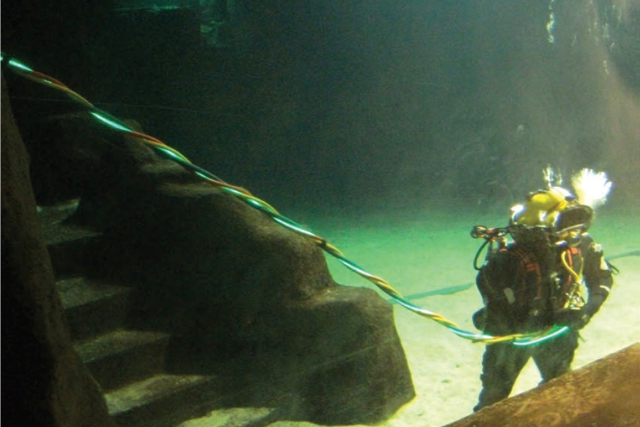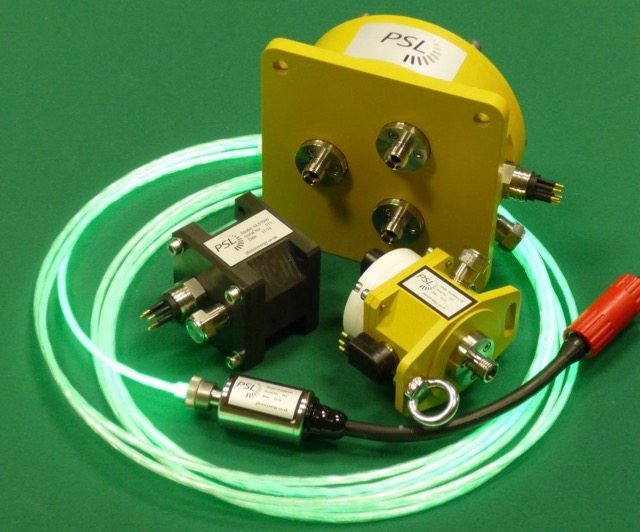Subsea safety lighting systems
Divers in the North Sea work in one of the most hazardous environments in the world. A diver operating at depths more than 30 metres within a hostile marine environment is essentially working in the dark and has only artificial light to guide them. A major issue comes with towed umbilical cords which may contain vital breathing gas, power, communications and heating to the diver. These cables are typically unlit and can easily be caught or snagged, generating major potential problems. Additionally, this cable is the diver's "breadcrumb" trail back to the safe environment of a diving bell or similar.

LIGHTPATH® dive umbilical lighting. Credit: The Underwater Centre, Fort William
Building on the School’s long heritage in laser physics and LED technology, Professor Malcolm Dunn and colleagues developed a novel side-illuminating fibre system suitable for safety guide lighting. This technology is built on research into non-linear frequency conversion and its implementation in designing compact solid-state lasers. The patented technology was commercialised by spin-out company PhotoSynergy Ltd under the trademark LIGHTPATH®. The technology offers safe guide path lighting in a variety of hazardous contexts, and has had notable impact in the oil and gas industry where it has made a significant contribution to diver safety.

PhotoSynergy LIGHTPATH® subsea products. Credit: Graham Miller, PhotoSynergy Ltd.
Having gained recognition within the sector by winning the Subsea UK Innovation for Safety Award in 2014, these systems are now widely deployed in dive umbilicals, both in the North Sea and around the world. The technology is influencing policy and regulations of key industry leaders such as Shell UK Ltd who now recommend the use of LIGHTPATH® for dive umbilicals.